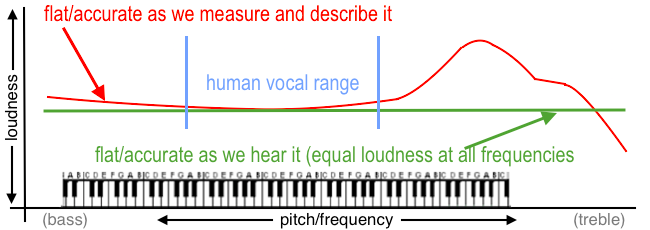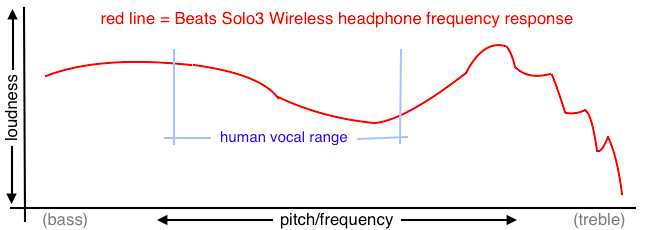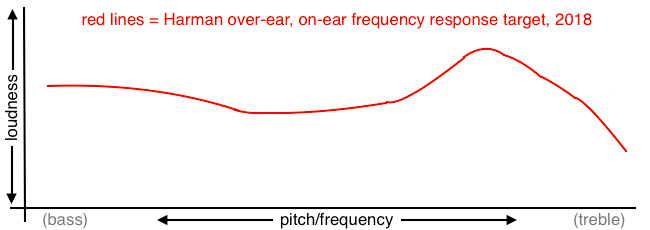OK, ilikecheese, you’re turning out to be one of those newcomers who actually want to understand things instead of just clicking buy, buy, buy until bank balance <= 0, lol. A lot of your questions can actually be answered more simply by using visuals, strangely enough. Here’s a visual:

I’ve crammed a lot of information into one image, so let’s take a bit of time to digest it. From left to right is the range of human hearing from the deepest bass to the shrillest treble. The piano keyboard has keys for a good chunk of that range. And the human voice, from deepest male bass note to highest coloratura soprano note is marked off by the two blue lines. Instruments like the cello, upright bass, bass guitar and tuba can go lower than the lowest human voice, so would fall to the left of the vocal range. Instruments like the oboe, flute and piccolo can go higher, so would extend to the right of the vocal range, but still no higher than the piano.
An accurate frequency response happens when each sound from bass to treble that is produced at equal loudness is heard as equal loudness out of the speaker or headphone. This is illustrated by the green line. But for technical reasons, for a headphone to actually re-create that subjective equal loudness experience, it has to generate somewhat louder sounds in the low and high ends of the frequency spectrum, as shown by the red line.

For headphones like a typical Beats, in order to get the most bass possible, a big compromise has been made. The bass elevation only starts tapering off well into the non-bass range. Compare the red line between the two blue lines in the first picture vs the second. You see that this results in the human voice and most instruments having their characteristic sound (timbre) distorted, so the lower pitches are louder than they should be and the higher pitches are relatively quieter than they should be. In addition the peak on the right is even louder than it needs to be to accurately reproduce high frequency sound. (This is actually a good thing when it forces bass lovers to keep the volume down so the screech of electric guitars and such-like don’t drive them crazy.)
As I stated in my last post, this v-shape is not a bad or good thing. It’s up to the individual to decide whether the mid-range compromise is acceptable in order to get that bass range goodness. Now, going back to Harman:

Here, the bass is elevated but only to the amount that research indicates is acceptable to the majority of people, and it tapers off before the mid-range starts. After that it follows the accurate curve fairly closely.
And, again, Harman isn’t some kind of ideal frequency response. Instead, we now have three “ideal” frequency responses to choose from: A) accurate, B) bass-heavy v-shaped and C) acceptable compromise for those who want an extra helping of bass but not at the expense of messing around with the mids.
OK, re-reading your last post, there’s the LCD-2 to talk about. Here’s what you heard:

This time I’ve used an actual frequency response measurements graph from a reputable source (instead of simplifying them by hand). The green line is how an LCD-2 measures and the grey line is the same Harman curve from the picture above.
The jaggedness of the green line isn’t unusual for a headphone and the human brain doesn’t make that jaggedness so obvious for listening to music. The main thing is that on the right where the Harman and the accuracy curves rise to form a gentle grey hill, the LCD-2 hardly bothers to budge off the same average level of loudness as it uses to the left. (The engineers at Audeze haven’t found a way to retain the good things they like about how their headphones produce sound while still getting them to rise in the high frequencies. They even provide a software app called Reveal, that corrects for this problem.)





